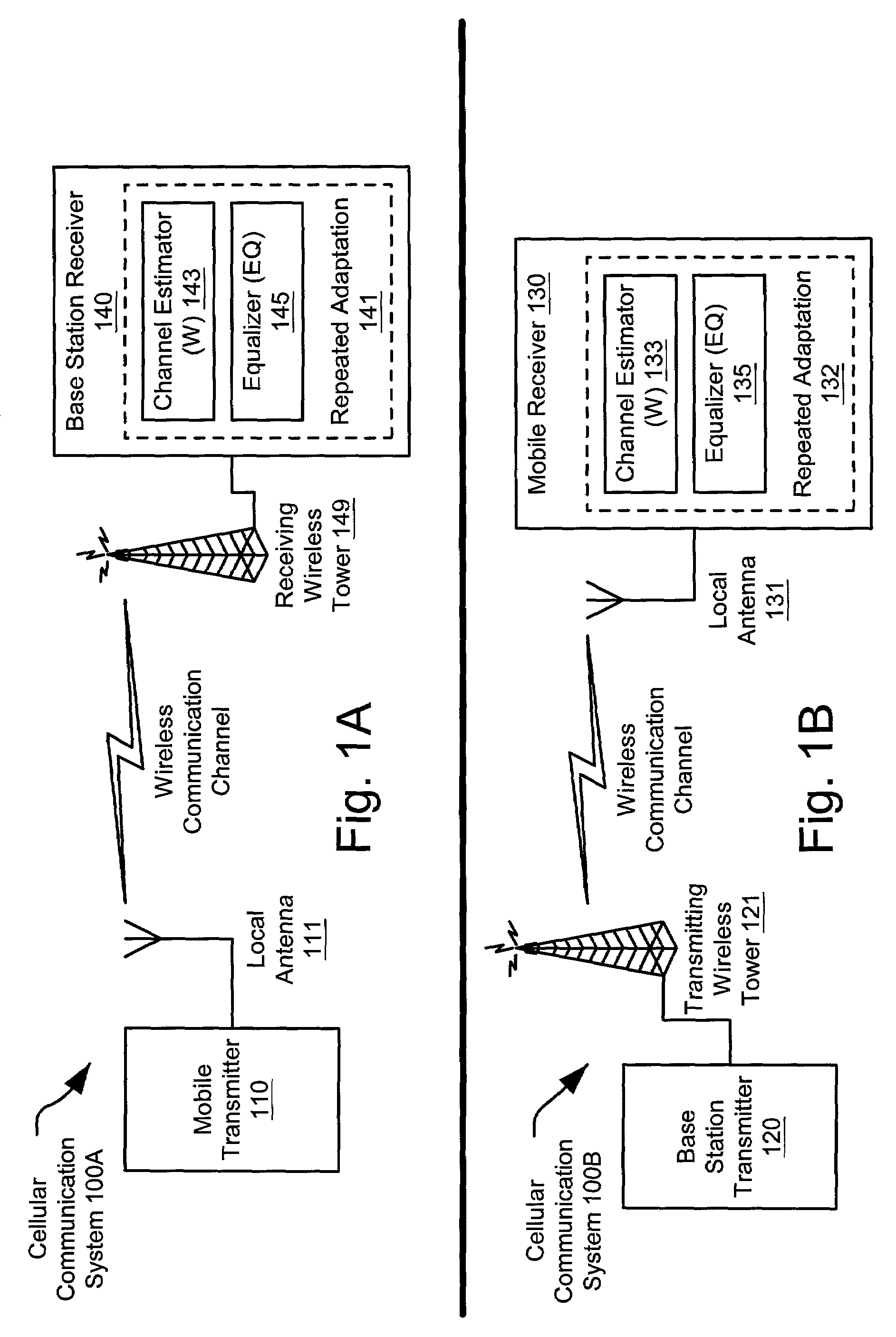Channel estimation and/or equalization using repeated adaptation
a channel estimation and adaptive technology, applied in the field of communication systems, can solve the problems of high computational intensity of prior art methods, high computational intensity of processes, and high computational intensity of calculations required in channel estimation, so as to speed up the convergence of adaptive methods, reduce the number of needed cycles, and low computational complexity of channel estimation
- Summary
- Abstract
- Description
- Claims
- Application Information
AI Technical Summary
Benefits of technology
Problems solved by technology
Method used
Image
Examples
Embodiment Construction
[0034]The present invention is operable to perform channel estimation and / or equalization using repeated adaptation. The invention employs its repeated adaptation approach within the system identification mode and / or the channel equalization mode (channel equalizer tap coefficient calculation). In one embodiment, the repeated adaptation generates a very accurate estimate of the communication channel, and then direct tap computation of the channel equalizer tap coefficients is performed to compute the optimal equalizer tap coefficients corresponding to the channel estimate. In another embodiment, the repeated adaptation is used to converge the equalizer tap coefficients directly without obtaining an estimate of the channel first. The present invention repeats the repeated adaptation on the same training sequence for multiple cycles. The resulting conditions, in either the channel equalization mode or the channel estimation / system identification mode, are used as the initial condition...
PUM
 Login to View More
Login to View More Abstract
Description
Claims
Application Information
 Login to View More
Login to View More - R&D
- Intellectual Property
- Life Sciences
- Materials
- Tech Scout
- Unparalleled Data Quality
- Higher Quality Content
- 60% Fewer Hallucinations
Browse by: Latest US Patents, China's latest patents, Technical Efficacy Thesaurus, Application Domain, Technology Topic, Popular Technical Reports.
© 2025 PatSnap. All rights reserved.Legal|Privacy policy|Modern Slavery Act Transparency Statement|Sitemap|About US| Contact US: help@patsnap.com



